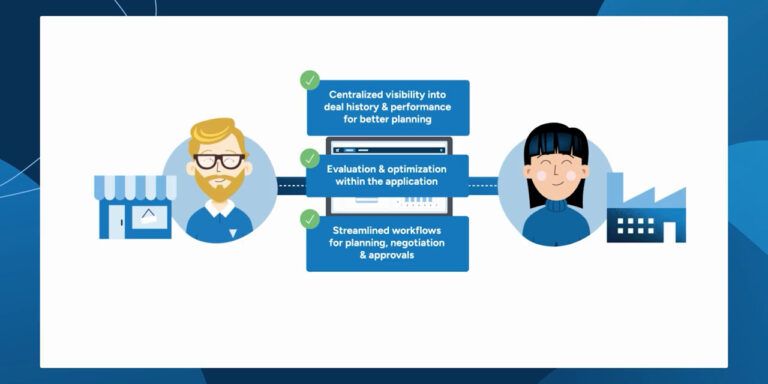Customer-centric pricing: from guesswork to strategies that resonate
Jul 11, 2025 • 8 min
Great pricing strategies start with thinking about the customer. They focus on understanding what drives purchase decisions and how people really shop. We sat down with Asa Farquhar, Solution Principal for pricing promotions at RELEX, to discover how retailers can decode customer behavior and create pricing strategies that align with genuine shopping patterns.
Sasha Hodes: Okay, Asa, let’s dive right in. How should customer shopping missions, desires, and needs influence retailers’ pricing decisions?
Asa Farquhar: That’s a great question. When you consider this in its simplest form — how will you serve the customer and stand out against the competition? You can’t do that unless you understand them.
One way to better understand your customers is to analyze transaction data. This will help you answer questions like: Why are they shopping? Are they coming in to buy groceries for the week? Are they visiting a home improvement store to get products for a specific project?
When you look at those transactions, you start to see customer habits and missions that recur, like taco night, for example. Once you understand why the customer is coming in and for what purpose, you can tailor your strategies to win their entire basket or attract that customer segment more often.
Really, it comes down to analyzing that data at a granular level and using AI and ML to start piecing together what’s drawing them in — which items you must win on pricing to grow baskets.
SH: Once retailers understand which items customers care about most in terms of price and how they compare prices between retailers, in what ways should this insight shape their pricing strategy?
AF: Once you know what those items are, you can build strategies to ensure you meet your objectives. Whether your goal is to increase sales, boost profits, or attract new customers, you can leverage that information.
If the data shows that you’re attracting customers but they aren’t buying their entire basket from you, that’s an opportunity to explore cannibalization and halo effects so that you understand which items you need to prioritize to get them to buy their entire weekly grocery shop from you.
You might also discover that you’re not attracting enough customers. This could be a good opportunity to revisit your pricing strategy or consider some promotional efforts to entice more visitors to your stores. As customers come in and make purchases, you’ll gather valuable shopping pattern data, which can help you understand how to keep your customers happy and eager to return for more.
SH: When considering KVIs (Key Value Items), how do retailers identify which products are highly price sensitive versus those where customers are less concerned about price?
AF: With KVIs—also known as key value items, though I like to call them known value items—science shows that they are highly price sensitive. But they’re also items for which the public knows what they should cost. People have a gut feeling about what milk should cost, what fuel should cost, and so on. These items appear in many baskets, and we identify them by calculating price elasticity.
High elasticity means high sensitivity to price changes, and these are the items you want to win. There’s a bit of a matrix here—the specific features of KVIs may differ for each retailer. But generally, these items are popular, appeal to a broad range of customers, and have high price sensitivity. This set of criteria helps identify the items that drive overall price perception and can draw more shoppers into stores.
Yes, identifying those KVIs helps you build a competitive pricing strategy and understand the customer so you can capture as much of their basket as possible. But on the flip side, you have items that aren’t as price-elastic. These can serve as margin enhancers or protectors to balance out the pricing mix and offset the reduced margins from your KVIs.
What you have to understand is this: Which items do you need to price aggressively to drive store traffic and influence customers’ decisions on whether to shop with you? But you also need to consider all the other store items—what roles should they play within your pricing strategy.
SH: When does competitor price matching make strategic sense, and when can it actually hurt a retailer’s price image?
AF: First and foremost, customers are very smart. They have access to more information than ever before. They can cross-shop on their phone while in your store, or, in an omnichannel sense, by looking at and comparing your in-store prices with online retailers.
Many retailers implemented competitive indexing strategies before advanced optimization solutions were developed or became commonly available. Therefore, it’s common for the retailers we speak with—those using heavily competitor price-indexed strategies—to lose significant margin due to these activities. The main reason for this is that they’re often price-matching or undercutting competitors on items that aren’t price-sensitive or don’t matter to their customers.
Regarding price image, customers understand which retailers follow and which leads on prices. Here’s how we should conceptualize this: Customers vote with their wallets. Every time they come in, they vote with their wallets. Elasticity helps you tally those votes and build better strategies than you could if you were just using competitive data.
So, you can gain market share by tailoring specific strategies based on customer behavior, which in this context is called price elasticity. And you can develop strategies at a local level to increase basket sizes, improve margins, and attract more customers to the store.
How you index versus your competitors is an important data point. It’s certainly a component of a good pricing strategy, but it shouldn’t be leading anymore. It should be something you’re keeping track of, so when you identify those high-elasticity items through science, you can figure out who customers are comparing you to.
SH: How should retailers adapt their pricing to serve local customers effectively?
AF: Localization or zoning—another common term—really requires an advanced solution. Every time you add a zone or cluster, you multiply the prices and promotions you’ll have to manage. It can become very challenging. I think for every retailer, there’s a balance between the ideal amount of localization they pursue and minimizing complexity.
It’s also imperative to have a solution that can calculate elasticities and cross-effects across the product and location hierarchy. Understanding those differences is the first crucial step. At RELEX, we have a process that supports developing city-specific pricing strategies, which are critical to get right.
As your localization capabilities mature, you can develop a deep understanding of customer preferences by local area. Preferences can vary significantly across regions based on different competitors, variations in behaviors, favorite items, and assortments. Retailers who have mastered localization can maximize their margins and sales across those zones, leading to sustainable, reliable growth.
For example, say you’re a retailer in the United States with stores in California. You can’t compare that market to Florida. They’re worlds apart, with different competitors, weather patterns, and demographics. Localization enables you to adapt your offerings to suit the customers in a particular area, giving them the items they want at the prices they expect.
SH: What challenges do retailers face in achieving omnichannel price consistency, and how can they create consistency in promotions across different channels?
AF: When I think about omnichannel price consistency, technology is part of the challenge. As customers, when we go into a store and see a tag that says $10, it should ring up as $10 at the register. Nothing creates a worse customer experience than tags that don’t match the register price.
Taking that concept into omnichannel, retailers need technology that ensures if I shop on the website, the prices match what I would see in store in my local area. There are technological solutions that provide such price consistency.
Read more: Optimizing space, assortments, and promotions for hybrid shopping
It’s also important to understand your sales mix as a retailer. If 95% of your sales are in-store with far fewer online, omnichannel price consistency may be a lower priority. However, many retailers we work with are seeing their online sales grow significantly—some are generating most of their revenue online. They need to maintain consistent pricing across all channels where customers shop.
But ultimately, a successful omnichannel experience requires the right technology. You need to understand the optimal price from a price optimization perspective. Also, your backend technology—whether your POS or website platform—needs to be in sync to deliver the best possible customer experience.
Sasha Hodes: What’s the best way to structure promotions so they enhance rather than undermine regular pricing strategy and customer relationships?
Asa Farquhar: Elasticity analysis, basket analysis, and other science-based tools can help you better understand what customers want and how they behave. These insights make it much easier to determine which items and categories should or shouldn’t be part of your promotional strategy.
I like to think of items and promotions as having missions. When planning a promotion, ask yourself: What is this promotion meant to achieve? Drive traffic? Increase margin? If it’s the former, you can use data-driven analysis to identify which promotional items will bring people into your store and fill their baskets.
But keep in mind: You don’t want to put items on sale that customers would have bought anyway at full price. This creates no benefit and encourages problematic shopping behavior like cherry picking, when customers only come in to buy the advertised items and nothing else. That’s an unsuccessful promotion because shoppers aren’t adding items from other categories or areas of the store to their baskets.
This points to a broader need for retailers to think more deeply about promotions—specifically, how they influence shopping behavior. Using an advanced pricing platform like RELEX supports this by allowing retailers to analyze not just the impact of different price changes, but also how putting an item on a specific display or promotional feature affects customer habits.
To maximize the effectiveness of your pricing strategies, you need a full understanding of category management: where should products be placed in the store? What assortment surrounds them? How should they be priced? And how should that price be communicated to customers?
Finally, avoiding disconnects between base pricing and promotions is critical. Retailers need coherent strategies to prevent these activities from conflicting or overlapping, which can hurt both business results and customer experience. That’s why it’s incredibly valuable to have your analysis, strategy building, and execution for pricing and promotions on the same platform.
Too often, promotional strategies don’t just fall out of sync with base pricing strategies—they actively undermine each other because the systems aren’t connected or aligned. Bringing these functions together, as you can do with RELEX, one solution creates huge operational advantages.
SH: Okay, Asa. We’ve come to the end of what’s been an intriguing discussion. To finish it off, what is the most important takeaway for retailers considering advanced pricing strategies?
AF: For me, the most important thing—and my background is in category management and price optimization—is this: if you’re a retailer looking to advance your pricing strategy and better understand your customers, you need to be comfortable with the science while remembering that it’s really about blending data with your team’s experience. Category managers have great intuition, after all.
This comes down to balancing science and human experience. Retailers have tremendous knowledge, and the key is combining that data-driven insight with seasoned judgment. Don’t let the science intimidate you. It’s about further enhancing the capabilities of talented people with deep expertise. When you combine those two elements, you can achieve remarkable results.
That’s where an advanced pricing tool like RELEX becomes invaluable—it provides intelligent, AI-powered capabilities that empower your team to apply their judgment and expertise for better outcomes.



